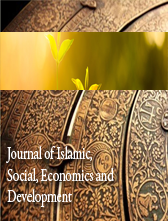COMPARING FORECASTING ACCURACY OF MONEY DEMAND IN THE MEMBER STATES OF THE SHANGHAI COOPERATION ORGANISATION (SCO) WITH THE INCLUSION OF FINANCIAL INNOVATION USING PANEL ARDL AND PANEL VECM
Abstract
In this paper we applied two different estimation methods, namely ARDL and VECM to estimate real demand for money in the member states of the Shanghai Cooperation Organisation (SCO) with the inclusion of financial innovations using panel data (all in real term) during 2004-2017. We use a conventional money demand function that was enriched with a proxy for financial innovation proxied by the number of automated teller machines (ATMs). The study found one cointegrated long run relationship among the logarithmic forms of Broad Money (M2), gross domestic product (GDP), interest rate and ATMs which paved the way for applying ARDL and VECM. VECM is cointegration relations built into the specification so that it restricts the long-run behaviour of the endogenous variables to converge to their cointegrating relationships while allowing for short-run adjustment dynamics, that is, the deviation from long-run equilibrium is corrected gradually through a series of partial short-run adjustments. Conventional OLS is not appropriate if at least one variable is I(1) as our case. ARDL method is capable of handling I(1) by including lags of both the dependent variable and independent variables as regressors in a standard least squares regressions making it suitable to address the issue of stationary and non-stationary variables. The results indicate that for ARDL estimation, static forecasting outperforms dynamic forecasting while for VECM estimation, dynamic forecasting is slightly superior to static forecasting. Comparison of these two methods shows that forecasting power of VECM is higher than that of ARDL meaning that estimation based on VECM provides more accurate forecast with regards to both dynamic forecasting and static forecasting.













